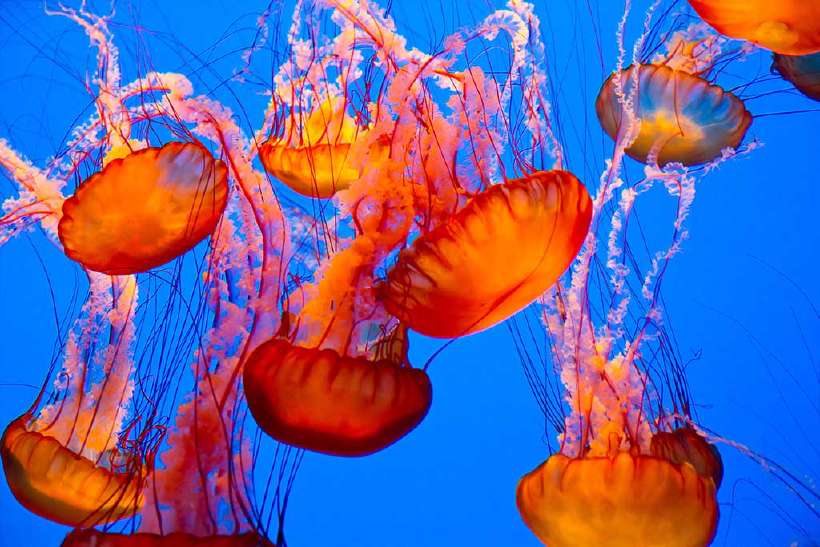Jellyfish: Fragile Creature of the Sea
Home / Science for Kids / Planet Earth for Kids / Jellyfish: Fragile Creature of the Sea
A sudden influx of jellyfish, in the Gulf of Mexico in the Atlantic Ocean is worrying both scientists and fisher folk alike. The Gulf of Mexico is bordered on the north by the United States, on the east by Cuba, and on the south and west by Mexico.
![Fragile Creature of the Sea [Illustration by Sudheer Nath]](/media/earth-90_1_hu3b7466cee12e355d36de987602c3a4ae_10026_820x0_resize_q60_box.gif)
Jellyfishes are invertebrates (animals without a spinal column). Some are also venomous and their sting can cause paralysis. However, the Jellyfish that have the fishermen worried are not on a stinging spree. Instead, they are clogging propellers, ripping fishing nets and eating up the sea plankton.
The animals are consuming microscopic plankton (the staple diet of fish in the region) and are now posing a serious threat to the Gulf’s ecological balance. The offshore oilrigs, artificial reefs and other man-made structures are providing ideal underwater breeding habitats for jellyfish.
Water pollution is yet another reason being cited. The chemicals running into the Gulf of Mexico and from the Mississippi River, feed algae and other microscopic plankton. Jellyfish feed on plankton that in turn feeds on the nitrogen in the water.
These animals have been known to live off the Caribbean Sea, but earlier this year, a few made their first appearance in the Gulf. It is believed that the jellyfish came through the Caribbean Sea on the hulls of ships. However, nothing prepared scientists for the sudden appearance of thousands of jellyfish.

Jellyfish have been on earth for over 650 million years – much before dinosaurs and sharks. There are over 200 different species of jellyfish. They come in many shapes and sizes. The largest of them all, known as the Arctic lion’s mane, can reach eight feet across with tentacles that extend over half the length of a football field.
A jellyfish has three main parts: the round umbrella-like body (called bell), which propels the animal with a pumping motion; tentacles that sting and immobilise prey; and oral arms (sometimes called flaps) that are used to catch and eat prey.
Most jellyfish sting is too weak to hurt humans and only cause a mild irritation. However, there are exceptions like the Australian box jelly. Its toxin is more potent than cobra venom and can kill a person in minutes.
Jellyfish are not really fish for they do not have gills. They breathe through their skin. Believe it or not, their bodies consist of more than 95 per cent water. If a jellyfish is placed on the beach, all that will remain, after a few hours, will be a puddle of water.
Jellyfish are extremely fragile animals and tend to get stuck and tear easily. If you ever intend to keep a jellyfish as a pet, you’ll have to ensure the aquarium tanks is cylindrical with no corners.
471 words |
4 minutes
Readability:
Grade 9 (14-15 year old children)
Based on Flesch–Kincaid readability scores
Filed under: planet earth
Tags: #jellyfishes, #scientists, #mexico, #sharks, #caribbean, #tentacles
You may also be interested in these:
When a Cat Preys for Lunch
Why do Flies have Compound Eyes?
How does the Lotus Flower Clean itself?
What Kind of Creatures are Sharks?
Jacques-Yves Cousteau